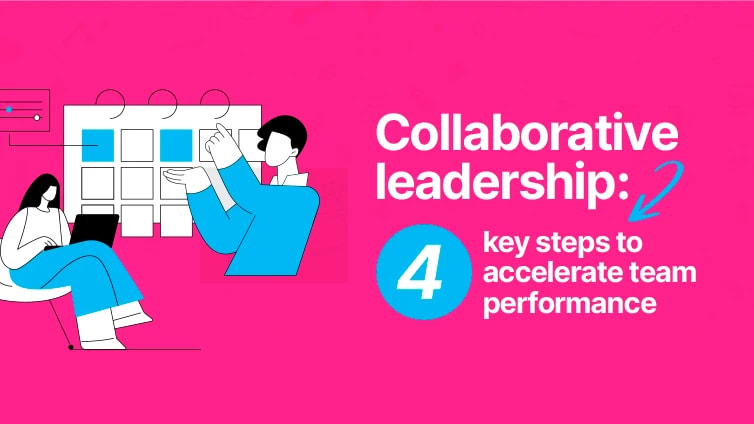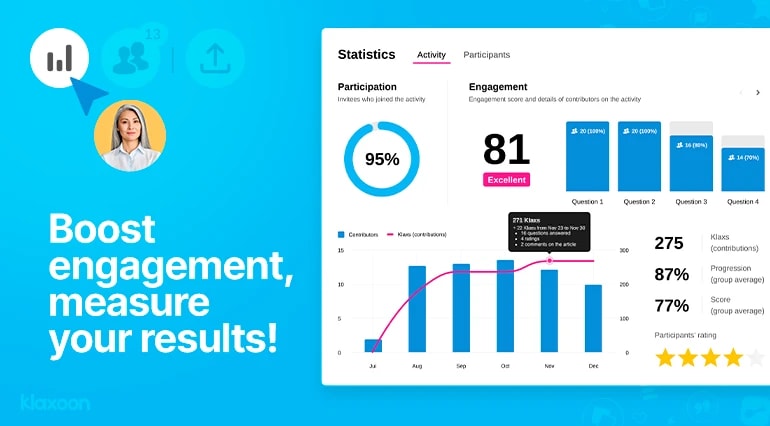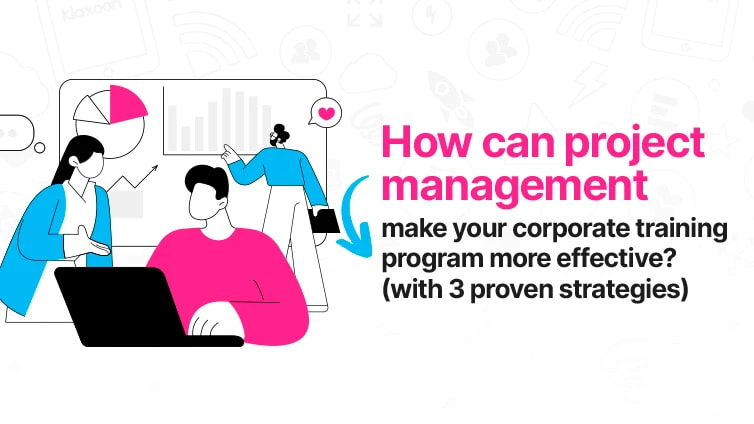Team training: 7 proven project management methodologies you need to try
Executive summary:
A report by the Project Management Institute shows that organizations using formal project management approaches are more likely to meet their goals. What does this mean for businesses? It highlights the importance of adopting effective project management strategies to improve performance and deliver results in all areas, including team training.
The fact is that many corporate training efforts fail due to a lack of interaction and ineffective collaboration, often resulting in low participation and engagement rates, wasted resources, and partially acquired skills. These challenges highlight the need for structured methodologies that provide clear processes for seamless and dynamic team training.
In this article, we explore seven proven methodologies inspired by project management that can help trainers and corporate L&D teams meet these challenges:
- Agile – focuses on iterative learning and flexibility;
- Lean – emphasizes efficiency by eliminating unnecessary steps;
- Kanban – offers a visual way to track progress;
- Design Thinking – fosters creativity and problem-solving;
- Waterfall – provides a sequential, structured approach;
- Scrum – promotes teamwork through sprints;
- OKR – ensure that team training aligns with overarching business goals.
When choosing a methodology, align it with your team's needs and goals. Avoid overloading your team with processes that can lead to micromanagement. Not allowing your team to express themselves and be creative can reduce trust and increase resentment.
The goal is to find a balance, a framework that maximizes learning efficiency without overwhelming. By doing so, organizations can create an environment where teams thrive and achieve their full potential.

This guide presents our 4-step methodology to help you implement collaborative leadership focused on high performance and efficiency.

It begins, as these things often do, with silence where there should be conversation, and hesitation where there should be certainty. As a result, team training time is wasted on unnecessary tasks, skills objectives are confused and valuable resources are not considered.
Leadership stands at the heart of this struggle. It is not merely about setting directions or issuing orders. It is the art of connection, a keen understanding of managing emotions with quiet confidence. Collaborative leadership skills become the guiding light through the murky path of collaboration confusion. It allows managers and L&D teams to nurture trust and reignite a sense of collective ambition.
Structured project management methodologies, with their clear frameworks and guiding principles, offer a relevant solution. These strategies are the maps that teams can follow to reclaim their rhythm, streamline their training efforts, and rediscover the power of collaboration. It is not a promise of perfection but rather ongoing progress to make the chaos intelligible again.
Read on to uncover how these 7 time-tested project management methodologies can help your team rise above these obstacles and embrace its full training potential.
What is an effective project management methodology?
Project management methodologies are like a roadmap for getting things done. They offer a structured way to plan, execute, and wrap up projects (or any other tasks such as team training), so that every step leads to meaningful progress.
These frameworks help teams make the most of their resources, stay on track, and hit their goals without losing sight of the bigger picture.
The secret to a successful implementation? Choosing the right methodology that not only fits the project but also supports your team’s unique quirks and needs. In short, project management methodologies bring structure to training while leaving room for creativity so your team can perform at their best.
What are the key benefits of project management methodologies?
Improved collaboration
Great teams do not happen by chance. They are built through clarity and connection. By defining roles and workflows upfront, project management methodologies eliminate confusion and finger-pointing, even when it comes to training.
Everyone knows their role and how to improve their impact, creating an environment where collaboration thrives, ideas flow and results speak for themselves.
Efficient resource use
Wasted time, wasted energy, wasted money. These are the enemies of progress. A solid methodology ensures every resource, from people to tools, is used wisely and with purpose.
No more spinning wheels on non-essential tasks. Instead, teams focus on high-value activities that move the needle and maximise returns.
Scalable processes
As for efficient training, good project management scales with your needs. These frameworks grow alongside your business, maintaining structure and consistency no matter the size or complexity of the team.
It is like having a blueprint for success that evolves without breaking under pressure.
Enhanced problem-solving
Effective problem-solving requires clear thinking and decisive action. Project management methodologies provide teams with structured approaches to handle challenges directly.
By following these processes, teams can break down obstacles, identify solutions, and turn problems into opportunities for growth.
Measured outcomes
Guesswork is for gamblers, not professionals. Project management methodologies put data and results front and center.
By tracking performance with KPIs (Key Performance Metrics), teams gain crystal-clear insights into what is working and what is not. It is a simple yet powerful way to stay accountable and consistently improve.

Klaxoon’s collaborative platform has been enhanced with new features to help you measure and increase participant engagement in your activities.

7 project management methodologies to use for effective team training
1. Agile: Empowering teams through iterative learning
Overview
Agile is like shaping a block of marble into a masterpiece. Each step builds on the last until the vision becomes clear.
Originally developed for software development, Agile is now widely used across industries to adapt quickly to changing needs.
Agile in team training
Break sessions into focused increments to encourage continuous improvement. Combine tools like Jira and Klaxoon to track progress, streamline workflows, and tweak after each iteration.
When it works best
Agile thrives in dynamic environments where adaptability is key. It may not suit teams needing rigid, linear processes or those resistant to frequent changes.
2. Lean: Streamline training for maximum efficiency
Overview
Many teams waste valuable time and energy on tasks that do not truly matter. Lean flips the script by asking, “What truly adds value?” It focuses on achieving more with less.
Lean in team training
Lean emphasizes “just-in-time” learning sessions that are focused, purposeful, and delivered when your team needs them most. This keeps teams engaged, reduces wasted time, and allows them to act decisively on what matters.
When it works best
Lean is ideal for teams that value precision, clarity, and efficiency. However, it may not suit teams that thrive in experimental, exploratory environments. Its structured approach works best in environments that prioritize streamlined processes.
3. Kanban: Visualizing team training progress
Overview
Kanban is a visual workflow management system that helps teams organize tasks and track progress.
By providing a clear picture of every step, Kanban makes it easy to see what is done, what is in progress, and what comes next.
Kanban in team training
Use Kanban boards to outline training objectives, assign tasks, and track milestones. Collaborative tools allow teams to create such visual and interactive boards, ensuring accountability and transparency throughout the process.
When it works best
Kanban works well for teams that need clarity and structure to manage multiple tasks.
However, it requires regular updates and communication to stay effective, making it less ideal for teams that struggle with organization or follow-through.
4. Design Thinking: Fostering creativity through problem-solving
Overview
Design Thinking is all about empathy, ideation, and prototyping to tackle complex challenges. It pushes teams to think beyond conventional solutions and approach problems with user-centric perspectives and creative energy.
Design Thinking in team training
Create training modules that address common team challenges. Incorporate collaborative workshops for brainstorming and prototype training scenarios to test and refine approaches before full implementation.
When it works best
Design Thinking thrives in environments where creative problem-solving is key. It may not be as effective for teams needing rigid structures or quick, predictable solutions.
5. Waterfall: Structuring training with sequential phases
Overview
Waterfall is a traditional, step-by-step approach where each phase is completed before moving to the next.
It is predictable and linear, like following a well-planned recipe where every step must be completed in order before moving to the next.
Waterfall in team training
Structure training programs into distinct phases. Planning, execution, and review. Each stage builds on the last, maintaining quality and consistency throughout the process.
When it works best
Waterfall works best for teams that prefer a structured, predictable approach. It is less suitable for dynamic or fast-changing environments that prefer flexibility.
6. Scrum: Building collaboration through sprints
Overview
Scrum is an Agile team-driven approach that breaks work into short, time-boxed sprints. It emphasizes collaboration, accountability, and iterative progress to deliver results quickly.
Scrum in team training
Divide training into short, manageable sprints with clear objectives. Conduct daily stand-ups to track progress and address challenges, and use tools like Product Backlogs and Sprint Retrospectives to refine training goals.
When it works best
Scrum is ideal for teams that thrive on collaboration and rapid adjustments. It may not suit groups that prefer lengthy, detailed plans or those resistant to regular check-ins.
7. OKR: Align training with organizational goals
Overview
Objectives and Key Results (OKR) are a goal-setting framework that keeps teams aligned with larger business objectives.
They focus efforts on measurable outcomes and drive results through accountability.
OKR in team training
Define clear objectives for training programs that align with company priorities.
Use measurable key results to track success, like improved performance or skill development, and review progress regularly to ensure alignment.
When it works best
OKR are great for teams that need a clear connection between their efforts and organizational goals.
However, they require disciplined tracking and may not work as well for teams unaccustomed to goal-driven accountability.
How to choose the right project management methodology for your team training
Each team is unique, and the right approach can mean the difference between confusion and clarity. Here is how to navigate the process step by step.
1. Assess your team’s needs
Start by asking: What obstacles are holding your team back?
Maybe it is poor communication, inefficient workflows, or an inability to adapt to change. By identifying these pain points, you can begin to match them with the strengths of different methodologies.
Remember, a methodology should solve problems, not create new ones. The clearer you are about your team’s struggles, the more effective your solution will be.
2. Understand your training objectives
Define what success looks like. Is it increased efficiency, improved collaboration, or faster delivery times?
Without a clear vision, you are like a ship lost at sea. Training objectives act as your compass, guiding every decision you make. Be precise, measurable, and realistic in setting these goals so you have a tangible benchmark for success.
3. Evaluate resource availability
No methodology works without the right tools, time, and budget. Be honest about what you have to work with. Stretching your resources too thin will lead to increased frustration.
Instead, choose a framework that fits within your team’s capabilities, allowing them to execute without feeling overwhelmed.
4. Test and repeat
Perfection does not happen overnight. Roll out a pilot program and watch closely. Where does it excel, and where does it falter?
Treat this phase as an experiment, gathering feedback from learners and refining as you go. Like sharpening a blade, each iteration should leave your process stronger, more focused, and better suited to your team.
5. Combine methodologies
Sometimes, no single methodology fits the bill perfectly. In these cases, do not be afraid to mix and match.
Borrow elements that work and discard what does not. A hybrid approach tailored to your needs can offer the structure and flexibility required to thrive. The key is to remain adaptable and constantly adjust to what serves your team best.
Conclusion
The fractures of poor leadership and project mismanagement are not always loud. They whisper their damage in wasted hours, misaligned goals, and teams that drift apart, unmoored from purpose.
But there is another way. Project management methodologies, like Agile’s adaptability, Kanban’s clarity, and Design Thinking’s spark of innovation, offer more than structure. They can easily be applied to many areas beyond project management, including team training.
The truth is simple: when methodologies meet intent, confusion gives way to clarity, and disjointed efforts bloom into purpose-driven achievements. If you are struggling with conducting a synergistic team, act now to guide your team with better training for effective collaboration workflows.

Learn how to apply project management strategies to your corporate training programs to increase their effectiveness.

Unlock your teamwork potential
For free, make your first steps to top-tier work efficiency with the Klaxoon Work Collaboration Platform.